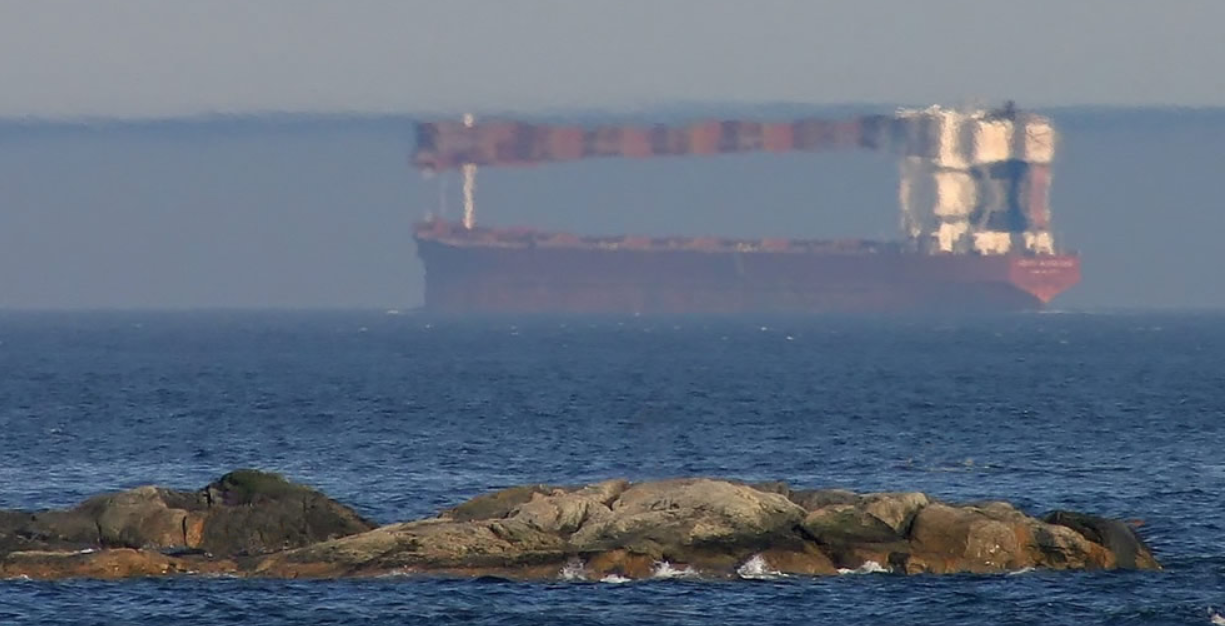Strange Ships Superior Mirages
Strange Ships and Superior Mirages: An Optical Phenomenon
Have you ever witnessed the strange sight of ships sailing above each other, defying the laws of physics? These peculiar occurrences, known as "superior mirages," are a captivating atmospheric optics phenomenon that can be observed in certain conditions. While most mirages create images below the object, superior mirages produce images above the miraged object, resulting in an inverted and sometimes duplicated appearance.
One notable example of superior mirages is the miraged ships in the Strait of Juan de Fuca, just south of the entrance to Victoria Harbour in British Columbia, Canada. Captured by photographer Craig Clements, these images showcase the enchanting spectacle of ships appearing to sail above each other, with parts of a third upright ship even visible above the inverted one.
To understand the science behind these intriguing mirages, we need to delve into the concept of temperature inversions. On unusually hot days, temperature inversions can occur when a distinct layer of colder air forms beneath a warmer atmosphere. This inversion layer plays a crucial role in the formation of superior mirages, as the temperature gradient between the colder air and the warmer air causes light rays to refract and bend in unique ways.
As light rays pass between the denser, colder air and the upper, warmer air, they are refracted and curved concavely towards the horizon. This curvature is most pronounced where the vertical temperature gradient is greatest. In the case of the miraged ships, the ray of light from the ship's mast is slightly curved, making it appear higher than its actual position. Another ray of light from the hull encounters an even higher region with a more significant temperature gradient, resulting in stronger refraction. When these rays intersect, an inverted image is formed, giving the illusion of an upside-down ship sailing above the lower one.
In some instances, when the inversion layer is thick enough, light rays from the mast can take a third route through the upper, warmer air towards the observer's eye or camera. These rays form a third image, this time appearing the right way up. This phenomenon explains the doubling of the ship's hull and the appearance of parts of the superstructure just below the dark band boundary in the second picture captured by Craig Clements.
It is important to note that superior mirages are not limited to ships alone. They can occur with various objects, such as buildings, cliffs, or even entire coastlines. The key factor for their occurrence is the presence of a strong temperature inversion, which causes significant refraction of light rays.
While superior mirages may seem extraordinary, they are well-documented and understood within the realm of atmospheric optics. These captivating illusions serve as a reminder of the remarkable ways in which light interacts with our atmosphere, continually surprising and fascinating us with their unexpected displays.
In conclusion, superior mirages, such as the strange ships observed in the Strait of Juan de Fuca, are a captivating optical phenomenon that occurs when temperature inversions cause light rays to refract and create inverted images above the miraged object. These mirages can be witnessed in various settings, offering a glimpse into the intriguing interactions between light and our atmosphere. The study of atmospheric optics continues to uncover the mysteries behind these enchanting phenomena, reminding us of the awe-inspiring beauty of the natural world around us.

Miraged Ships in the Straight of Juan de Fuca just south of the entrance to Victoria Harbour, British Columbia, Canada imaged by Craig Clements (gallery). Images ©Craig Clements, shown with permission.
An inverted ship sails above the lower vessel. The lower picture has parts of a third upright ship above the inverted one! These are 'superior' mirages - superior because the images are above the miraged object. The Fata Morgana is an extreme superior mirage. More everyday 'inferior' or hot road mirages have the image below the object creating them.
Craig comments, "It was an unusually hot day in July and a very distinct temperature inversion formed between the colder water and warm atmosphere." The inversion layer, colder air below warmer, is the key to the mirages. The lower air is visible as the dark band.
Light rays passing between the dense colder air and the upper warm air are refracted so that ray paths become curved and concave to the horizon level. I.e. they tend to curve downward. The ray curvature is strongest where the vertical temperature gradient is greatest.
In the diagram (below) the ray 'b' from the ship mast is slightly curved making the mast appear to be at a point above the 'real' ship. Ray 'c' from the hull encounters a higher region of even greater temperature gradient and is more strongly refracted. Where ray crossing occurs the resulting image is inverted - an upside down ship sails above the lower one.
When the inversion layer is thick enough, rays from the mast have a third route 'd' through upper warmer air towards the eye or camera. They form a third image - this time the right way up. Traces of it show in the second picture where the hull is doubled and parts of superstructure appear just below the dark band boundary..


Note: this article has been automatically converted from the old site and may not appear as intended. You can find the original article here.
Reference Atmospheric Optics
If you use any of the definitions, information, or data presented on Atmospheric Optics, please copy the link or reference below to properly credit us as the reference source. Thank you!
-
<a href="https://atoptics.co.uk/blog/strange-ships-superior-mirages/">Strange Ships Superior Mirages</a>
-
"Strange Ships Superior Mirages". Atmospheric Optics. Accessed on December 21, 2024. https://atoptics.co.uk/blog/strange-ships-superior-mirages/.
-
"Strange Ships Superior Mirages". Atmospheric Optics, https://atoptics.co.uk/blog/strange-ships-superior-mirages/. Accessed 21 December, 2024
-
Strange Ships Superior Mirages. Atmospheric Optics. Retrieved from https://atoptics.co.uk/blog/strange-ships-superior-mirages/.